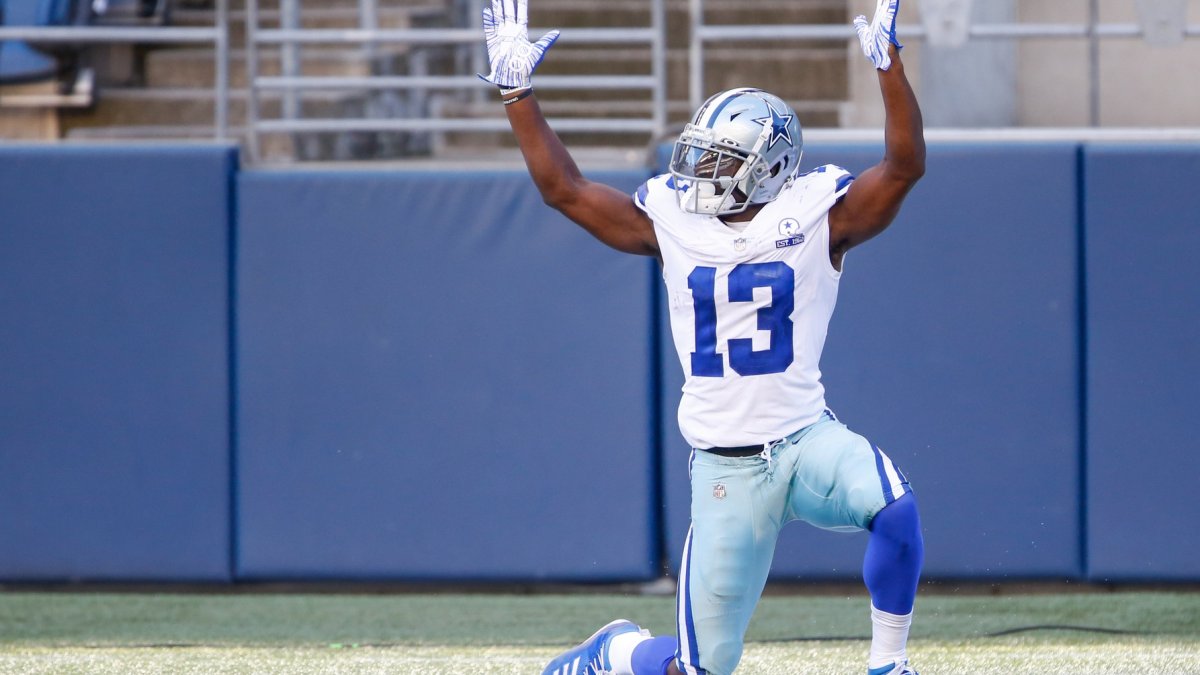Volume reigns supreme in fantasy football because opportunities are the first step to scoring fantasy points. It’s a simple concept: The more touches/targets a player earns, the greater their chances of producing.
This isn’t earth-shattering news. Volume has always been and will be the king in fantasy football, but that doesn’t mean fantasy managers should blatantly overlook predictive efficiency metrics that can be found at PFF.
EFFICIENCY MATTERS
At the wide receiver position, targeting players with a path to ample opportunities is the right initial approach, but it’s oftentimes overemphasized against selecting a more talented player. With so many NFL offenses routinely running three-wide receiver sets — more than half of the NFL used 11 personnel 60% or more in 2020 — the trajectory for lower-end receivers to see offensive snaps isn’t as drastic as one might expect.
The target pecking order for teams seems set in stone entering the season based on the fantasy projections, but the distribution can shake up rather quickly because of injuries and natural variance.
This can lead to certain wide receivers seeing unexpected spikes in opportunities, such as Tee Higgins, Chase Claypool, Darnell Mooney, Keelan Cole and Nelson Agholor in 2020. All of these receivers saw between 15% and 19% target shares last season, and nobody was predicting them to do so. Virtually none of them were drafted inside the top 150 players a season ago.
But there were tell-tale signs that suggested these receivers had a chance to rise based on their previous production and efficiency profiles.
Higgins was a second-round pick and PFF’s third-highest graded receiver in the 2020 draft class. Claypool was also a second-round selection and PFF’s fifth-highest-graded receiver (94.3) in the class on deep targets (20-plus air yards). During his rookie season, Claypool led the NFL in deep targets (42) and finished fifth in total air yards (1,825).
Mooney posted a 33% college dominator rating at Tulane, which would rank fourth-best in this year’s rookie class, and posted an elite 2.96 yards per route run in 2018 that was nearly identical (or better) to some of his highly coveted 2020 draft classmates — Tee Higgins (2.97), CeeDee Lamb (2.94), Jalen Reagor (2.56) and Justin Jefferson (2.52).
Cole was uber-efficient as a rookie, ranking fourth in his draft class in overall grade (70.3) — behind only Chris Godwin, Cooper Kupp and JuJu Smith-Schuster. The second half of his first year has been one of the few times he has been viewed as a legitimate starter — without being regulated to just slot duties — and he thrived, averaging 2.16 yards per route run (ninth).
Some believed that Nelson Agholor was a bust after five seasons in Philadelphia before a breakout season with the Las Vegas Raiders, but that wasn’t necessarily the case. Agholor served as an integral part in Carson Wentz’s 2017 short-lived MVP run, finishing the year with a top-25 and career-best PFF receiving grade (74.0).

DOMINATE FANTASY FOOTBALL & BETTING WITH AI-POWERED DATA & TOOLS TRUSTED BY ALL 32
 Unlimited Fantasy League Sync
Unlimited Fantasy League Sync
 Fantasy Start/Sit Line-Up Optimizer & Waiver Wire
Fantasy Start/Sit Line-Up Optimizer & Waiver Wire
 WR-CB & OL-DL Matchups, PFF Player Grades, & Premium Stats 2.0 Tools
WR-CB & OL-DL Matchups, PFF Player Grades, & Premium Stats 2.0 Tools
 Nathan Jahnkes Rankings - #1 Most Accurate Last 70 Weeks
Nathan Jahnkes Rankings - #1 Most Accurate Last 70 Weeks
 PFF Best Bets, Player Props, & Power Ranking Tools
PFF Best Bets, Player Props, & Power Ranking Tools
 NFL Mock Draft Sim with Trades & Draft Grades
NFL Mock Draft Sim with Trades & Draft Grades
Already have a subscription? Log In



 © 2024 PFF - all rights reserved.
© 2024 PFF - all rights reserved.